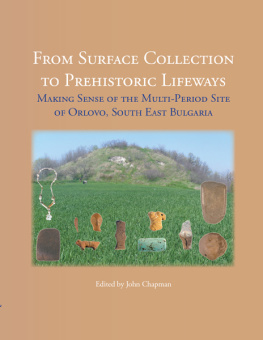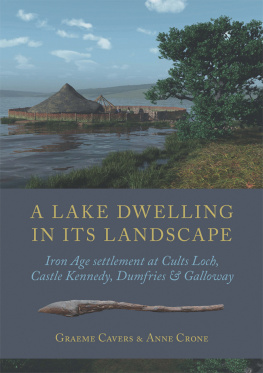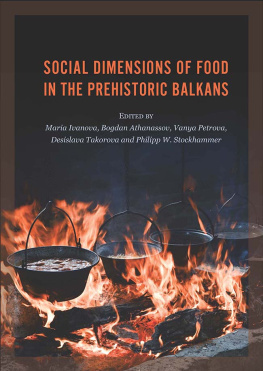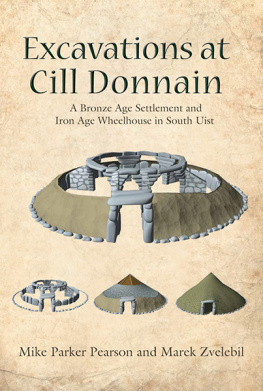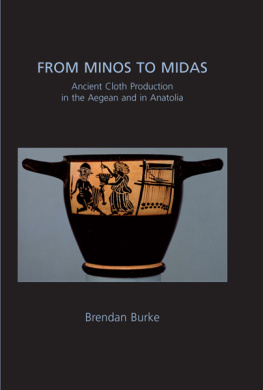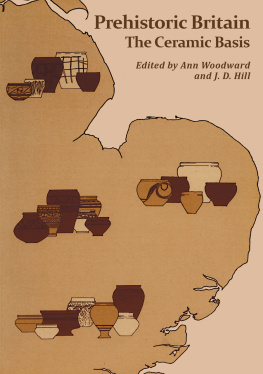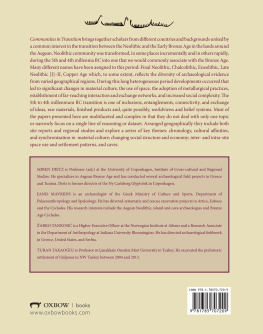Published by
Oxbow Books, Oxford
Oxbow Books and John Chapman, 2010
ISBN 978-1-84217-391-6
EPUB ISBN: XXXXXXXXXXXXX
A CIP record for this book is available from the British Library
This book is available direct from
Oxbow Books, Oxford, UK
(Phone: 01865-241249, Fax: 01865-794449)
and
The David Brown Book Company
PO Box 511, Oakville, CT 06779, USA
(Phone: 860-945-9329; Fax: 860-945-9468)
or from our website
www.oxbowbooks.com
Library of Congress Cataloging-in-Publication Data
From surface collection to prehistoric lifeways : making sense of the multi-period site of Orlovo, south east Bulgaria / edited by
John Chapman ; with contributions by Bisserka Gaydarska ... [et al.].
p. cm.
Includes bibliographical references.
ISBN 978-1-84217-391-6
1. Orlovo Site (Bulgaria) 2. Antiquities, Prehistoric--Bulgaria--Khaskovo Region. 3. Khaskovo Region (Bulgaria)--Antiquities.
4. Khaskovo Region (Bulgaria)--Antiquities--Collection and preservation. 5. Material culture--Bulgaria--Khaskovo Region-
History--To 1500. 6. Prehistoric peoples--Bulgaria--Khaskovo Region--Social life and customs. 7. Community life--Bulgaria
-Khaskovo Region--History--To 1500. 8. Social archaeology--Bulgaria--Khaskovo Region. 9. Neolithic period--Bulgaria-
Khaskovo Region. 10. Copper age--Bulgaria--Khaskovo Region. I. Chapman, John, 1951- II. Gaydarska, Bisserka.
GN845.B8F76 2010
949.96--dc22
2010018124
Printed in Great Britain by
The Short Run Press, Exeter
Contents
John Chapman and Bisserka Gaydarska
John Chapman, Bisserka Gaydarka and Ruslan Kostov
Bisserka Gaydarska and Ana Raduntcheva
John Chapman and Ruslan Kostov
Bisserka Gaydarska and Ruslan Kostov
John Chapman, Bisserka Gaydarska and Ana Raduntcheva
John Chapman and Bisserka Gaydarska
Bisserka Gaydarska
Ana Raduntcheva and John Chapman
List of Figures
List of Plates
List of Tables
Preface
We dedicate this book to the memory of the inspiring Haskovo archaeologist, Dimcho Aladzhov (19302010)
One of the finest field archaeologists of his generation.
This volume had its origins in the collaborative research in the Eastern Rhodopes (the Rocky Landscapes Project) and the tell of Dolnoslav (The Dolnoslav Figurine Project) that three of the authors Ana Raduntcheva, John Chapman and Bisserka Gaydarska have carried out from the late 1990s onwards. It was Sanja who first drew the attention of John and Bisserka to the outstandingly interesting surface collection from the site of Orlovo, curated in the Historical Museum of Haskovo. Our first visit to meet the Keeper of Archaeology, Mr. Irko Petrov, was in August 2006. We agreed to return in the winter of 2006/7 to begin a detailed study of the finds. Since the research could not be completed in this visit, we returned in Easter 2007, this time with two other colleagues. The first was Dr. Ruslan Kostov, a geologist and mineralogist, who had previously worked with John and Bisserka on the petrology of the miniature polished stone axe and the pumice in the Omurtag hoard (Gaydarska et al. 2004), as well as with several other prominent Bulgarian prehistorians. The second was Elena Georgieva, an illustrator who had worked with John and Bisserka on the Dolnoslav figurines. The team of six is jointly responsible for the research presented in this book, as well as for the specialist tasks for which each person was responsible:- the site environment and cultural context Irko Petrov, John Chapman and Ruslan Kostov; the figurines Ana Raduntcheva and Bisserka Gaydarska; the polished stone axes Bisserka Gaydarska and Ruslan Kostov; the ornaments John Chapman and Ruslan Kostov; the museum documentation and photography Irko Petrov; and the line drawings Elena Georgieva. The seventh memebr of the team, Yvonne Beadnell (Durham) added new illustrations
The authors would like to record our collective and/or individual thanks to those who have made a substantial contribution to this publication:- the Bulgarian Academy of Sciences for funding (JCC and BG); the British Academy for funding (JCC and BG); Durham University for funding and research time abroad (JCC); Haskovo District Council, for support to the Project (IP); and the Haskovo Police Force, for providing an escort for the site visit, Colonel Branimir Mitkov, whom we also thank. John and Bisserka are grateful for the kind invitation from Fotis Ifantidis and Marianna Nikolaidou to speak about Orlovo at their EAA session on Spondylus at the Zadar Annual Meeting, September 2007. Several Durham and Bulgarian colleagues have helped in the research: we should like to thank Robin Skeates (advice on artifact biographies), Judy Allen (for her help with plant taxa); Georgi Nehrisov (discussions on aspects of Rhodopean prehistory); Erich Claen, Alasdair Whittle, Eva Lenneis, Burcin Erdogu, Antiklia Moundrea-Agrafioti and Onur Ozbek (help with polished stone axe parallels) and Dr Kathie Way, Natural History Museum (for her kind identification of shell species). We are particularly grateful to Alasdair Whittle who read the entire book and made valuable comments about settlements, personhood and exchange networks. The skills of our publishing team at Oxbow Books Clare Litt and Tara Evans have made the production of this book far easier than we could have imagined.
The Orlovo objects have now been placed back in their quaint wooden containers, nestling in the locked cupboards of the Keeper of Archaeology in the Regional Historical Museum of Haskovo. The microscopes, geological lenses and thin-section equipment have been stored and the computer programmes for post-collection analysis have been switched off. No more e-mails will be sent between the authors, or between the authors and their colleagues, to elicit answers to factual enquiries or comments on ideas and new interpretations. No more of the endless short walks between two adjoining upstairs rooms in a house near Durham City consulting, discussing, disagreeing, calming nerves, stimulating the two principal authors to work and re-work the interpretations of this fascinating collection. This book has taken part of a two-year period at a busy time of our lives a Research Assessment Exercise (RAE) in Durham, a major new exhibition in the National Natural History Museum in Sofia, new excavations on Rhodopean sanctuaries, complete renovations of the Haskovo Museum, etc., etc. We hope that the Orlovo collections will feature strongly in the new display on the prehistory of the Haskovo region.
It has been a pleasure to work with our group of authors friends and colleagues as well as professionals, mostly working at a distance from each other but always in virtual contact. We hope that each reader will gain a sense of the excitement of this extraordinary site which all of us have encountered during this research.
John Chapman and Bisserka Gaydarska, on behalf of the authors
Introduction
Excavation and fieldwalking irreconcilable results?
Archaeology in the 21st century is a complex and tangled web of irreconcilable theories and barely integrated methodologies. Since none of the grand set of theories purporting to be paradigms (traditional, processual, postprocessual) has been replaced in the desired Kuhnian framework (Kuhn 1962), there is a chaotic network of competing theoretical claims and counter-claims (Fletcher 1989), which leaves some archaeologists baffled and demotivated, others excited at the prospect of further change. The barely concealed antagonism between humanistic and scientific archaeology, Andy Jones notwithstanding (Jones 2002), is hardly conducive to the resolution of theoretical conflicts.
Next page
